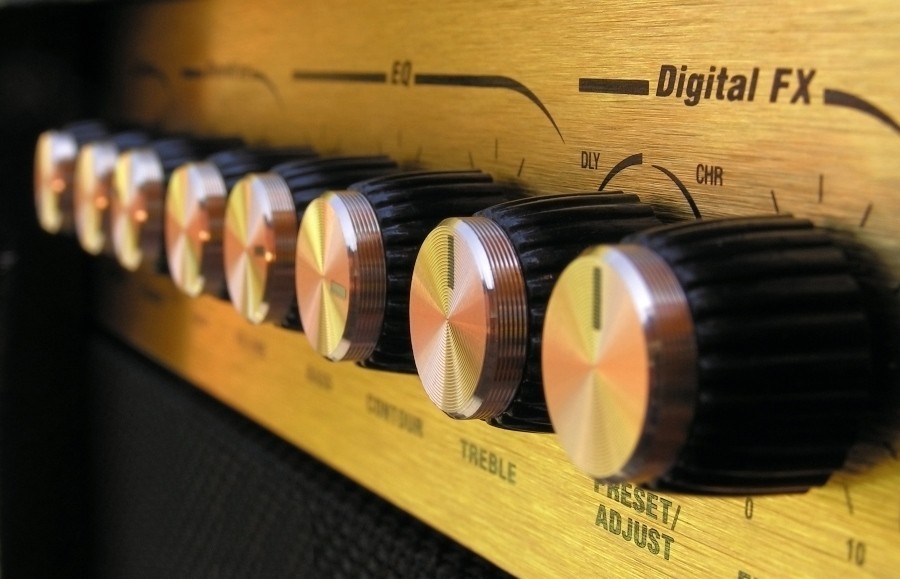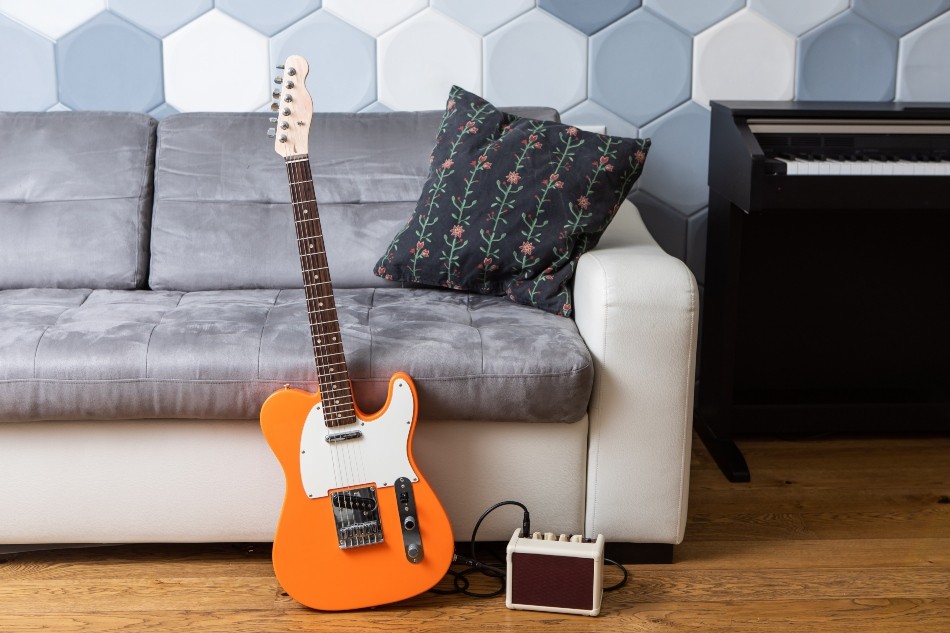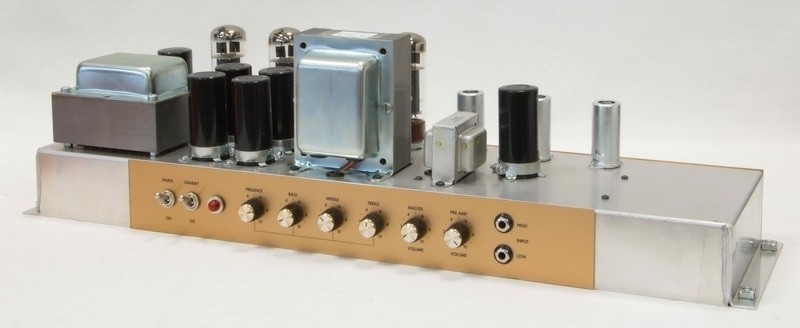« A question of good tone »
Good sound and music are passionate topics and often lead to some emotional discussions. But hardly any topic gets tempers so frayed as the comparison of different amplifier technologies. While there are still heated discussions about the question of transistors vs. tubes, the tube technology and digital technology camps have long since turned their backs on one another. Both techniques have their advantages and disadvantages and, of course, also have a right to exist in the colourful world of music. We’ve taken this conflict as an opportunity to take a closer look at modern amplifier technology, which is commonly known as Class D or digital amp.
Class D amplifier – what actually is it?
There are still a lot of misunderstandings about Class D amps. So, in order to be able to distinguish between the advantages and disadvantages of this technology, first we’ll take a look at the technical basics of Class D amps. But don’t worry – it won’t be too technical and abstract!
How the Class D amplifier works
Very often, Class D devices are referred to as “digital amplifiers”, “amps with digital technology” or “digital amps”. Unfortunately, this designation is misleading and leads us to incorrect conclusions. A class D amp isn’t a purely digital device, but one which relies on the work of transistors – which, in turn, do the physical work and are therefore not digital in the traditional sense. Unlike conventional transistor amps in Class A or Class A/B operation, Class D amps don’t use a linear signal, instead they use a so-called PWM signal to amplify the sound. This pulse width modulation is the translation of the analogue input signal (wave-like) into a switching operation at the output stage.

Simply put, this is where a transistor works: it only understands the incoming PWM signals as a request to be switched either “on” or “off” – at breakneck speed. In combination with a switching power supply, which only supplies current when it’s really needed, and by constantly switching the output stages on and off, Class D amps work much more efficiently than classic Class A or B amplifiers. After the output stage has amplified the PWM signal, it runs through further components (high-cut filters) to get the original audio waveform back.

It’s only too understandable that this way of working brings back memories of the cold, digital world of 1s and 0s. However, the signals of the input signal are never converted to these values. Instead, the PWM pulse sequence is an analogue “on-off translation” of the analogue, wave-shaped input signal!

Applications of Class D amplifiers
Class D amplifiers or digital amplifiers have been used for a long time and in many areas where they’re about the most efficient and power-saving form of amplification available. Typically, digital amplifiers can be found in PAs and public address systems, high-wattage power amplifiers for Hi-Fi applications or also in guitar and bass amps.
Especially in studio operation or for Hi-Fi applications, Class D amps come in very useful, because with their compact design and low waste heat, they also find space in standardised studio racks.

Advantages and disadvantages of Class D amplifiers
As we’ve shown, digital amplifiers offer some advantages over amplifiers with tubes, which run in Class A or Class B operation, but they also have some disadvantages. Here’s a brief overview:
Advantages
- Very high energy efficiency (efficiency of about 90% as opposed to about 60% for Class A/B)
- Digital amplifiers are usually very small
- Very little waste heat, hardly any heat build-up
- Low output impedances
- Very good audio reproduction and sound
- Very low maintenance requirements

So the digital amplifier looks good on paper – however, there are also some disadvantages to the Class D:
Disadvantages
In addition to the spartan look of Class D amps, which is often criticised by music purists in particular, “digital amplifiers” also have some disadvantages on the technical side:
- Very complex construction
- Deviations in sound quality depending on the circuit
- Complicated repair
- Less haptic feedback
- Less dynamic behaviour in the sound
Tube amplifiers vs digital amplifiers – what really matters
The more modern technology, great sound, more economical operation and all in a compact casing – modern digital amplifiers seem to be ahead in almost all areas. So why is it that so many guitarists still rely on the good, old-fashioned tube amplifier? Tube amplifiers are ahead in particular in two categories – at least in our subjective perception: feeling and sound.
The tube feeling
Despite all the objective measurement data, we love our tube amplifiers. They’re big, they’re heavy, they get hot and sometimes they’re defiant like little kids – and that’s exactly why we love them. Their analogue feeling can’t replace any well-emulated sound from a processor which has yet been developed. In particular, their unreliability and the creeping changes in the sound, which creep in due to ageing processes and environmental influences, make the amplifier more of an instrument than a piece of technical equipment. The additional work which we need to spend on tube replacement, burning-in and bias setting, we don’t think of as a burden, but as a way of living out our hobby. The supposed shortcomings in the sound or in the functionality are features rather than bugs of an old technology.
And the feeling of turning on an old, well-adjusted tube amp with a loud “clack”, feeling the warmth and seeing the glowing tubes is simply irreplaceable!
The tube sound
A lot has been said about the sound of tube amps and the supposedly inadequate sounds of transistor amps. We strongly disagree with this: modern, well-adjusted and wired transistor amps sound wonderful! They deliver clear sounds with gigantic headroom, sound effortlessly in huge halls and can be played for days almost without any maintenance. And yet there’s something which makes us come back to the tube again and again: the natural dynamics, which are particularly effective in interaction with instruments. The smallest variations in the pick hand allow the tubes to break open finely, pull transparently or sing warmly and gently. The overtones which occur in the distortion of an electron tube make it sound soft and “natural”. And the knowledge that the signal from the instrument through the tube amplifier is processed as a wave to the ear does the rest – after all, listening is also a psychological process!
Tube amplifiers vs. digital amplifiers – conclusion
In the question of tube amplifiers vs. digital amplifiers it doesn’t come down to clearly outlined facts – it’s a choice between two approaches which could not be more different. While the technical advances of recent years have led to an ingenious new amplifier class of digital amplifiers, the tube still comes up trumps when it comes to feeling and subjective sound perception.
Both variants have their own characteristics and are therefore not mutually exclusive, which makes the competition between tube amplifiers and digital amplifiers a purely subjective matter. Both types of amplifiers occupy their very own niche. But when it comes to the sound and the psychological experience of music, our opinion is clear: nothing can compare to the tube!
___________________________________________________________________________________________________________________________
Image sources:
Title image: © David Fuentes – stock.adobe.com
Man with bass guitar: © yuriygolub – stock.adobe.com
PA Loudspeakers: © makedonski2015 – stock.adobe.com
Amplifier, dials, close-up: © Andrew Barker – stock.adobe.com
Guitar leans on sofa: © Artem Bruk – stock.adobe.com
 Tubeampdoctor Magazin
Tubeampdoctor Magazin



